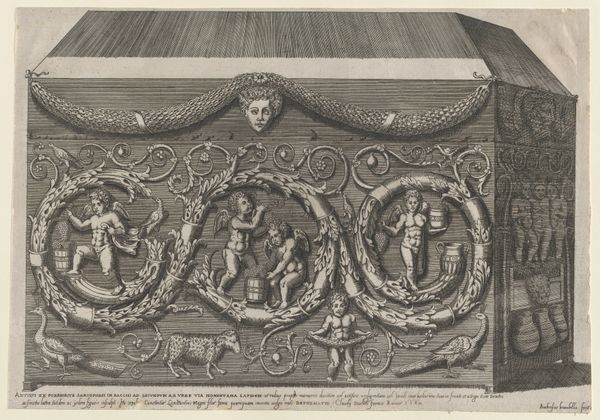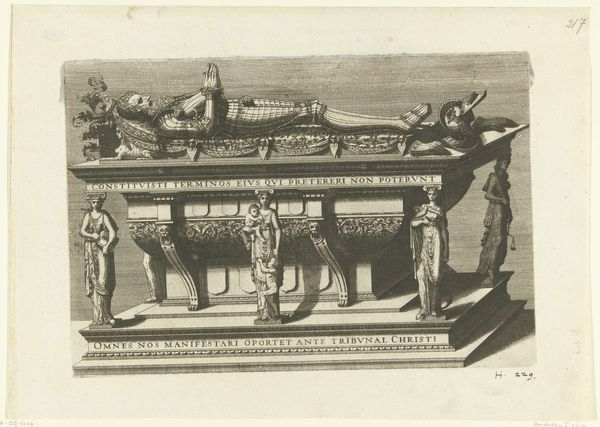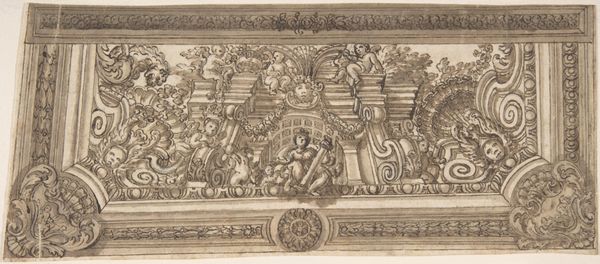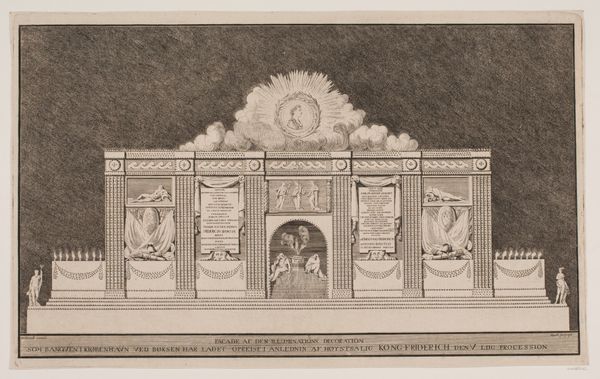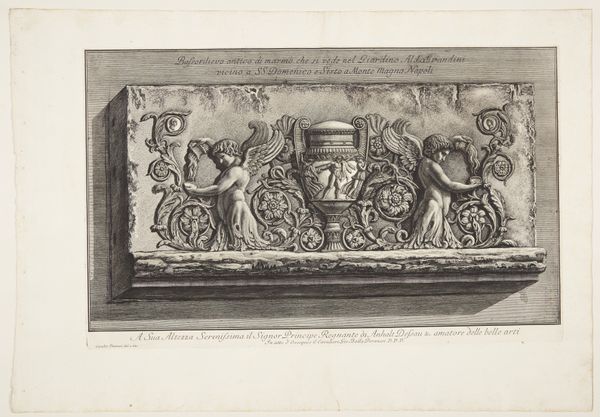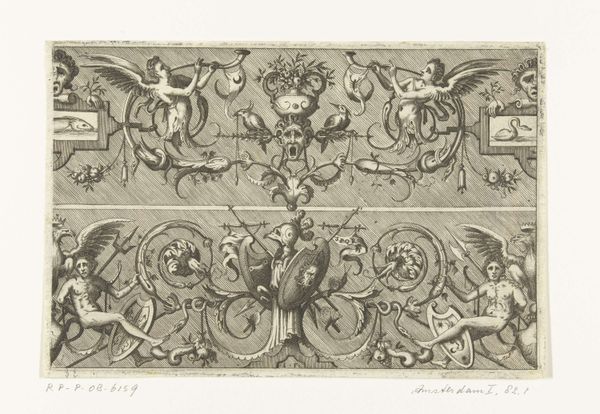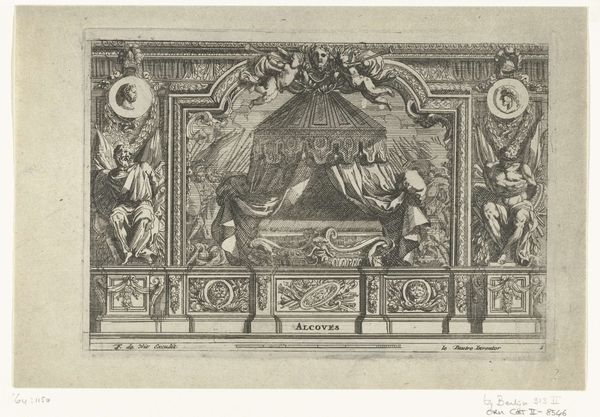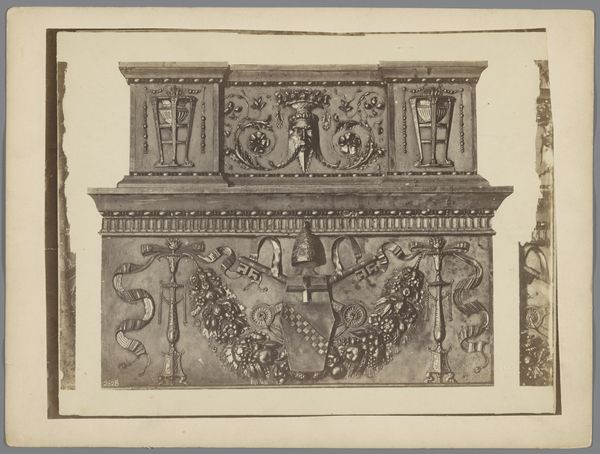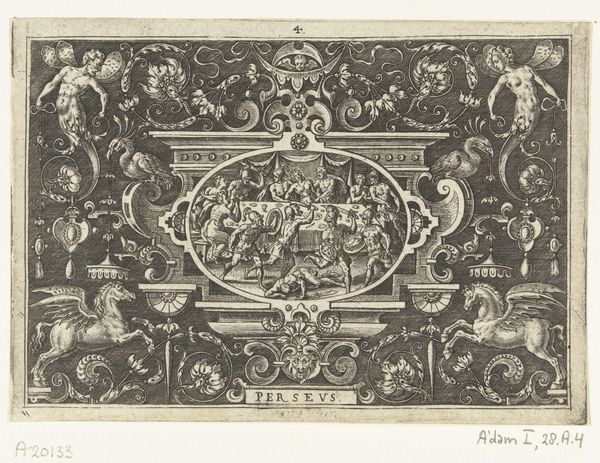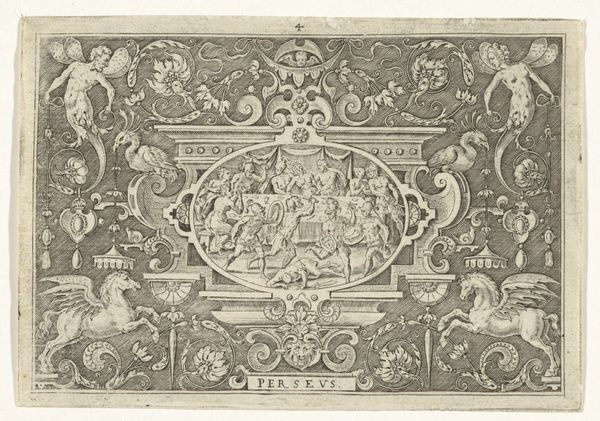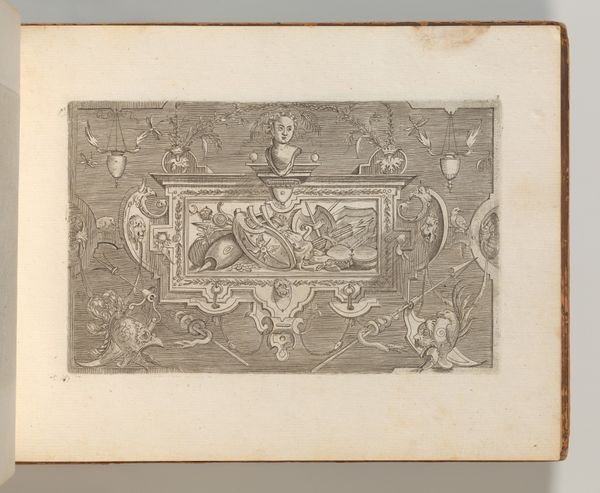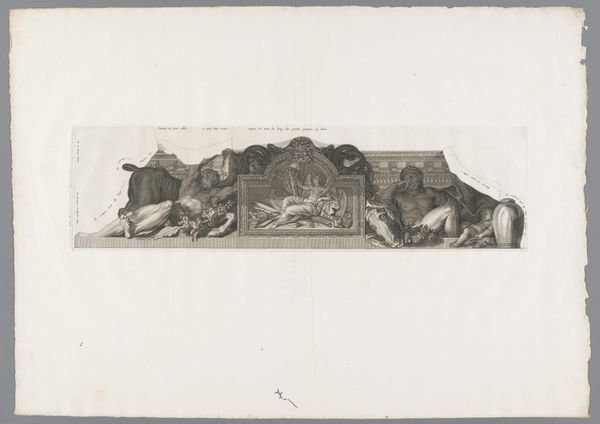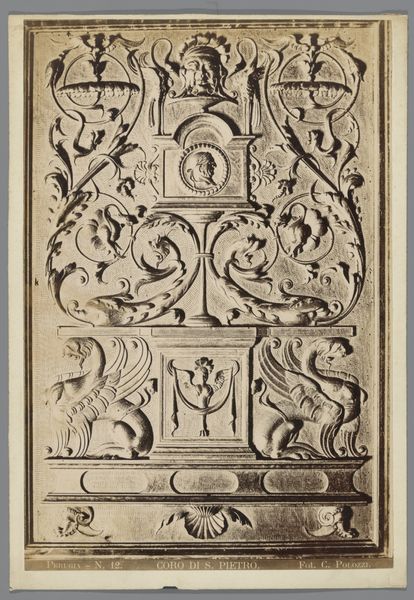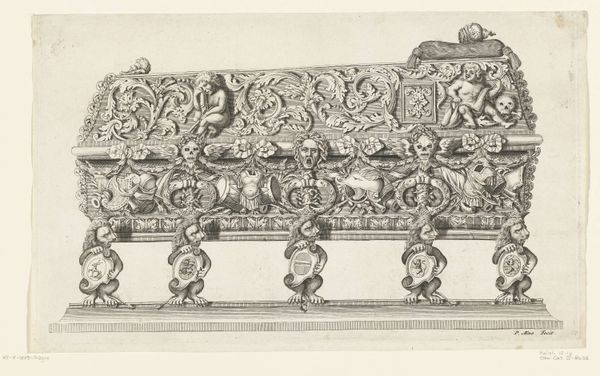
Speculum Romanae Magnificentiae: Decorated Sarcohpagus with Arabesques 1553
0:00
0:00
drawing, print, relief, paper, engraving
#
drawing
# print
#
relief
#
figuration
#
paper
#
11_renaissance
#
history-painting
#
decorative-art
#
italian-renaissance
#
engraving
Dimensions: sheet: 13 3/8 x 19 1/8 in. (34 x 48.6 cm) plate: 11 1/4 x 16 9/16 in. (28.5 x 42 cm)
Copyright: Public Domain
Curator: This engraving is part of a collection known as the Speculum Romanae Magnificentiae, created in 1553. This particular piece, whose creator is unknown, depicts a highly decorated sarcophagus. Editor: The intricate detail is just stunning. All those playful figures... there’s an almost frivolous feeling to it, especially juxtaposed with the subject: a sarcophagus, meant for the dead. Curator: Indeed. The abundance of arabesques and putti suggest a desire to imbue death with a sense of celebration or even triumph, a prevalent attitude of the Italian Renaissance. The material itself, the engraving on paper, allows for wider distribution. Editor: It becomes almost a pattern book, doesn't it? An instruction manual for elaborate burial. Were these kinds of sarcophagi really made, do you think? Curator: Certainly. Wealthy patrons of the time often commissioned extravagant tombs. This engraving probably functioned as a promotional tool or served to document existing examples, and this print shows both wealth and technological skills that enable such an impressive display of artwork, to be put to service for those in positions of power. Editor: Look closely at the figures—the laborers seemingly rejoicing as they work and even playing, almost an ode to labor? Curator: Precisely. The printing press democratizes visual access but at the expense of artisanal crafts and in the process, memorializes artistic vision. Editor: A rather opulent send-off documented on paper... it makes you wonder about the actual artisans' fate who produced it! Thanks to engravings like this one, its echoes of influence still ripple through art history. Curator: Absolutely. Reflecting on its creation gives insight to our consumption patterns, the power and display and a history to where this pattern is coming from.
Comments
No comments
Be the first to comment and join the conversation on the ultimate creative platform.
